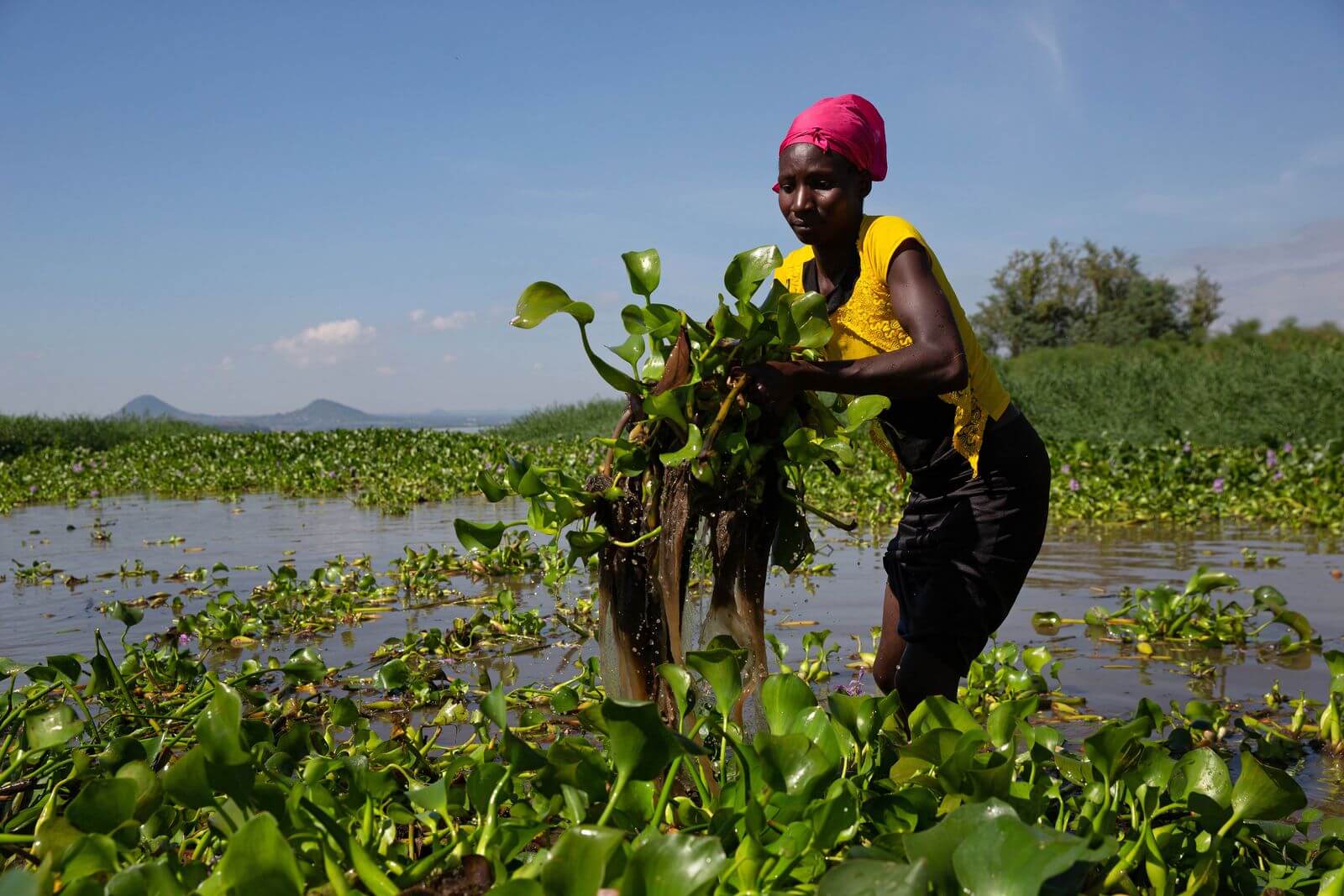The water hyacinth is steam boiled, dried, crushed and fermented to make a protein-rich powder, which is then mixed with minerals and energy-rich materials like maize bran to make an affordable animal feed for poultry, dairy and fish farmers.
Biotechnologist Jack Oyugi came up with the idea when, as a dairy farm manager, he faced high animal feed costs and low milk production first-hand.
Oyugi began harvesting and testing water hyacinth after he saw animals eating parts of the invasive plant on the shores of Lake Victoria. Water hyacinth only has 14% protein, but Oyugi’s patented fermentation process uses a local fungus to increase the protein levels to 50%. His process also removes contaminants from the plant and softens the fibrous lignose that makes it tough to chew.
In a pilot study, Kenyan farmers saw a 20% increase in milk production, and 30% decrease in feed costs.
Countries surrounding Lake Victoria have been plagued by the fast-growing, impenetrable plant. It prevents fish from breeding, blocks tunnels, which leads to flooding, and clogs municipal water intakes, limiting communities’ access to water. It also curbs tourism by preventing boat rides and fishing.
Oyugi removes the plant from the lake, and plans to expand his operations to other African countries plagued by water hyacinth, including Ethiopia, Nigeria, Tanzania and Uganda.
The by-products produced in the process of making the feed are sold as fertilisers and soil conditioners.



